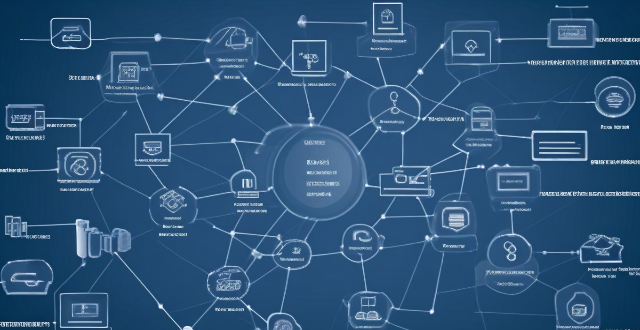To detect and prevent network intrusions, implementTo detect and prevent network intrusions, implement approach that includes: conducting training employees on security best practices, and regularly updating software and firmware. This comprehensive approach can significantly reduce the risk of network intrusions and protect an organization's valuable assets.

How Can I Detect and Prevent Network Intrusions?
Network intrusions are a serious threat to any organization's cybersecurity. They can result in data breaches, financial losses, and reputational damage. To detect and prevent network intrusions, you should implement a multi-layered approach that includes the following steps:
1. Conduct a Risk Assessment
The first step in detecting and preventing network intrusions is to conduct a risk assessment. This involves identifying potential threats and vulnerabilities in your network infrastructure. You should consider factors such as:
- The types of data stored on your network
- The number of users with access to sensitive information
- The level of security measures currently in place
- Potential attack vectors (e.g., phishing emails, malware)
Based on this assessment, you can develop a plan to address any identified weaknesses and mitigate potential risks.
2. Implement Firewalls and Intrusion Detection Systems (IDS)
Firewalls and intrusion detection systems (IDS) are essential tools for detecting and preventing network intrusions. Firewalls act as a barrier between your internal network and the internet, blocking unauthorized access to your network resources. IDS, on the other hand, monitor network traffic for signs of malicious activity or policy violations. Some benefits of using firewalls and IDS include:
- Blocking unauthorized access: Firewalls prevent unauthorized users from accessing your network resources by filtering incoming and outgoing traffic based on predefined rules.
- Monitoring network activity: IDS continuously monitor network traffic for suspicious activity, such as unusually large data transfers or repeated login attempts, which could indicate a potential intrusion attempt.
- Alerting administrators: Both firewalls and IDS can send alerts to administrators when they detect potential security threats, allowing them to take immediate action to investigate and mitigate the issue.
3. Use Encryption and Access Controls
Encryption and access controls are critical components of a robust cybersecurity strategy. By encrypting sensitive data and implementing strict access controls, you can limit the impact of a successful intrusion attempt. Some benefits of using encryption and access controls include:
- Protecting sensitive data: Encryption ensures that even if an attacker gains access to your network, they cannot read or modify encrypted data without the appropriate decryption keys.
- Limiting user access: Access controls restrict user access to sensitive information based on their role within the organization, reducing the risk of insider threats or accidental data leaks.
- Auditing and monitoring: Access controls provide a record of who has accessed specific resources, allowing administrators to track potential security incidents and identify areas for improvement in their security policies.
4. Train Employees on Security Best Practices
Employees are often the weakest link in an organization's cybersecurity defenses. Providing regular training on security best practices can help employees recognize and avoid potential threats, such as phishing emails or social engineering tactics. Some benefits of employee training include:
- Raising awareness: Regular training helps employees understand the importance of cybersecurity and recognize potential threats.
- Reducing human error: Proper training can help employees avoid common mistakes, such as using weak passwords or falling victim to phishing scams.
- Improving incident response: When employees know how to respond to a potential security incident, they can quickly report suspicious activity to IT staff, allowing for faster investigation and mitigation of the issue.
5. Regularly Update Software and Firmware
Outdated software and firmware can leave your network vulnerable to known exploits and vulnerabilities. Regularly updating these components ensures that you have the latest security patches and protections against emerging threats. Some benefits of keeping software and firmware up-to-date include:
- Patching vulnerabilities: Updates often include patches for known security vulnerabilities, reducing the likelihood of a successful intrusion attempt.
- Improving overall performance: Updating software and firmware can also improve system stability and performance, enhancing the overall user experience.
- Staying compliant with regulations: Many industries have specific requirements for maintaining secure networks, and regular updates can help ensure compliance with these regulations.
In conclusion, detecting and preventing network intrusions requires a comprehensive approach that includes conducting risk assessments, implementing firewalls and IDS, using encryption and access controls, training employees on security best practices, and regularly updating software and firmware. By following these best practices, you can significantly reduce the risk of network intrusions and protect your organization's valuable assets.